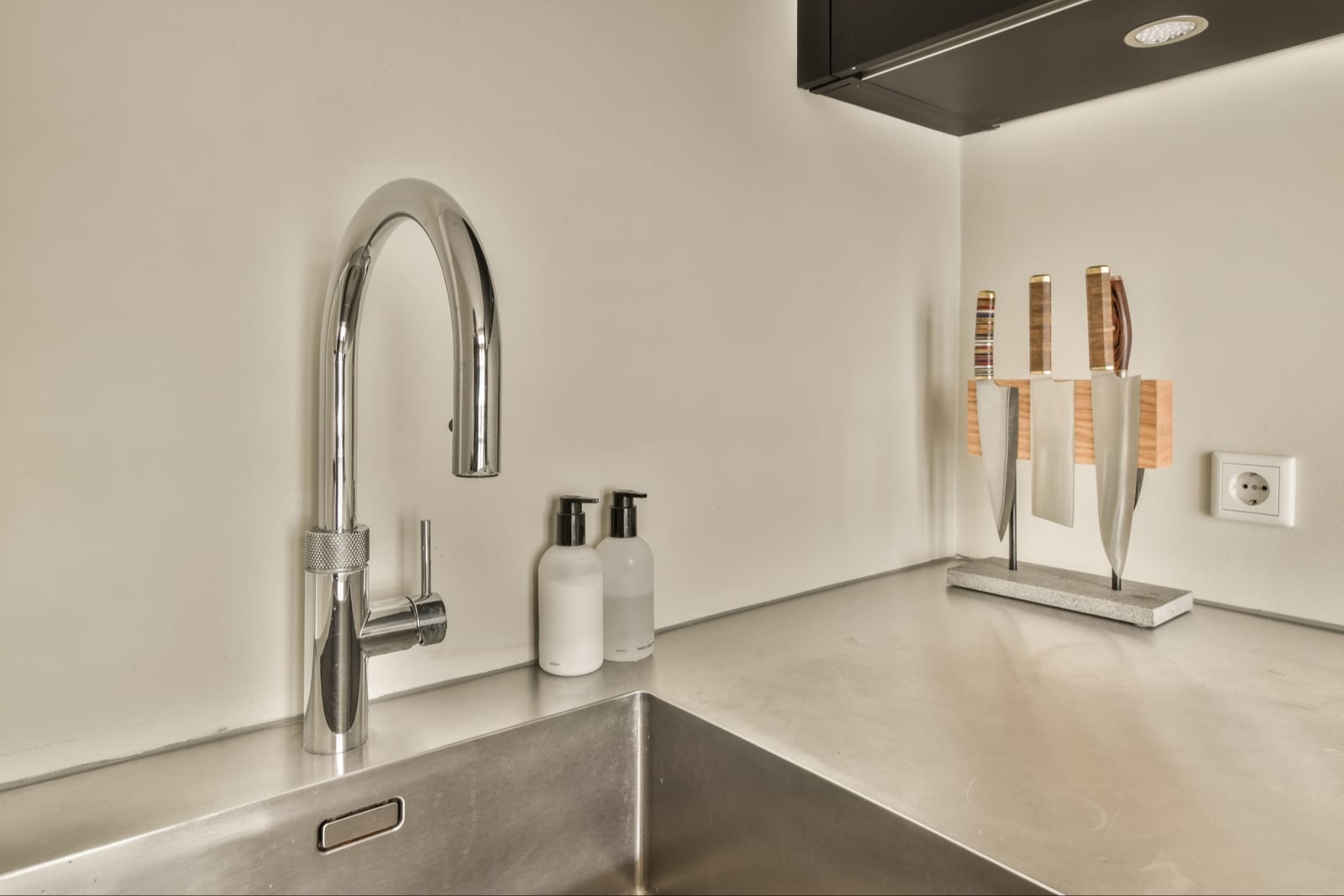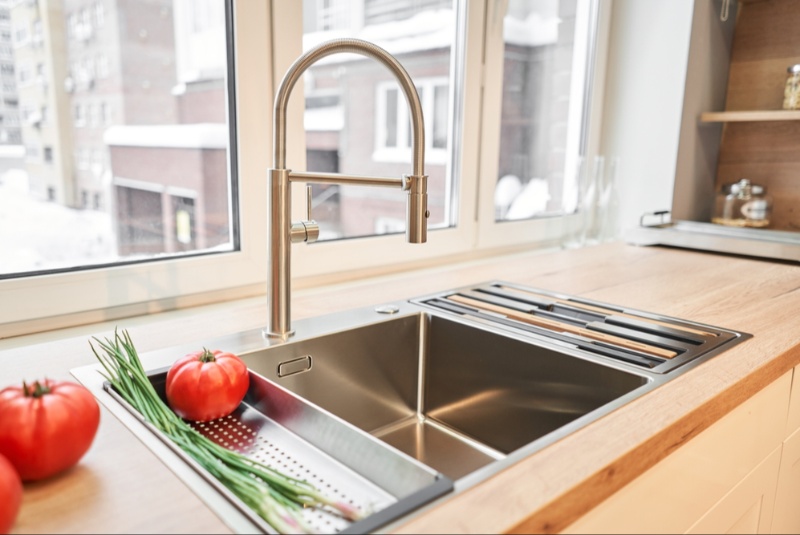Understanding the Importance of a Quality Kitchen Faucet
The kitchen faucet is one of the most frequently used fixtures in the home, making it an essential element of your kitchen design and functionality. A high-quality faucet not only enhances the overall aesthetics of your kitchen but also improves the ease and efficiency of tasks like washing dishes, filling pots, and cleaning produce. Choosing the best kitchen faucet ensures that it meets your needs in terms of durability, water flow, and ease of use. With the wide variety of styles, finishes, and features available today, selecting the right faucet can significantly improve your kitchen experience and complement your kitchen décor.
Types of Kitchen Faucets: Which One Suits Your Needs?
There are several types of kitchen faucets to choose from, each offering different functionalities and designs. The most common types include single-handle faucets, double-handle faucets, pull-down, pull-out, and touchless faucets. Single-handle faucets are known for their simplicity and ease of use, while double-handle faucets offer more precise control over water temperature. Pull-down and pull-out faucets come with spray heads that provide added flexibility for tasks like rinsing dishes. Touchless faucets use sensors to detect motion, making them a hands-free, hygienic option. Understanding these options helps you choose a faucet that fits your kitchen routine and personal preferences.
Faucet Finish: Matching Style with Durability
The finish of a kitchen faucet is a key factor in its appearance and durability. Common finishes include stainless steel, chrome, brushed nickel, matte black, and oil-rubbed bronze. Stainless steel and brushed nickel finishes are popular for their modern, sleek appearance and resistance to fingerprints and water spots. Chrome is a more traditional choice, known for its high-shine finish and affordability. Matte black faucets have become a trendy option for modern and minimalist kitchens, offering a bold contrast to lighter countertops and sinks. When choosing a faucet finish, consider both the aesthetic of your kitchen and the durability of the material to ensure long-lasting style.
Faucet Height and Reach: Practical Considerations
The height and reach of your kitchen faucet are practical factors to consider, especially if you frequently fill large pots or have deep sinks. A tall-arc faucet, also known as a gooseneck faucet, offers ample clearance for washing oversized items and can add an elegant touch to your kitchen. However, be mindful of faucet height if you have cabinets or shelving above your sink. The reach of the faucet refers to how far the spout extends over the sink, which is important for ensuring adequate water coverage. Matching the height and reach of the faucet to your sink size and layout ensures maximum functionality and convenience.
Water Flow Rate: Finding the Balance Between Pressure and Efficiency
Water flow rate is an important consideration when selecting a kitchen faucet, as it impacts both water pressure and efficiency. Most kitchen faucets have a flow rate of 1.5 to 2.2 gallons per minute (GPM), with lower flow rates offering better water conservation without compromising performance. If you want to reduce water usage while maintaining good water pressure, look for faucets with a WaterSense certification, which indicates that they meet EPA standards for water efficiency. Balancing flow rate with your kitchen needs can help you save on utility bills while still providing adequate water pressure for everyday tasks.
Pull-Down vs. Pull-Out Sprayers: Which Is Right for You?
Pull-down and pull-out sprayers are popular features in modern kitchen faucets, offering increased flexibility and convenience for cleaning and rinsing tasks. Pull-down faucets feature a spray head that pulls directly downward into the sink, making them ideal for deep sinks and larger kitchens. Pull-out faucets, on the other hand, have a spray head that can be pulled outward, giving you more range of motion and making them suitable for smaller sinks or tight spaces. Both options come with multiple spray settings, including stream and spray modes, allowing you to switch between tasks easily. Choosing between pull-down and pull-out sprayers depends on your kitchen layout and personal preferences.

Touchless vs. Traditional Faucets: Pros and Cons
Touchless faucets have become increasingly popular due to their convenience and hygiene benefits. These faucets use motion sensors to activate the water flow, allowing you to wash your hands or rinse dishes without touching the handle, which reduces the spread of germs. Touchless faucets are especially useful in busy kitchens or for families with young children. However, traditional faucets still offer simplicity, reliability, and control, often at a lower price point. While touchless faucets may require battery replacements or electrical connections, they offer a modern, hands-free solution for those who prioritize cleanliness and ease of use.
Faucet Mounting Options: Deck-Mounted vs. Wall-Mounted
The way your faucet is mounted can significantly affect both its appearance and functionality. Deck-mounted faucets are installed on the sink or countertop and are the most common option for modern kitchens. They are available in a wide range of styles and finishes and are easy to install. Wall-mounted faucets, on the other hand, are installed directly on the wall above the sink, freeing up counter space and creating a clean, minimalist look. Wall-mounted faucets are ideal for kitchens with limited counter space or for those looking to create a unique design aesthetic. Consider your kitchen layout and style preferences when choosing between deck-mounted and wall-mounted options.
Installation and Compatibility with Existing Fixtures
Before purchasing a new kitchen faucet, it's important to consider the installation process and compatibility with your existing sink and plumbing fixtures. Most sinks come with pre-drilled holes for faucet installation, typically in one-hole, two-hole, or three-hole configurations. Make sure the faucet you choose matches the number of holes in your sink, or be prepared to purchase an additional deck plate to cover any unused holes. Additionally, consider whether you’ll need professional installation or if you feel comfortable with a DIY approach. Understanding the installation requirements ensures that your new faucet will fit seamlessly into your kitchen setup without any unnecessary complications.
Budget Considerations: Finding the Best Value
Kitchen faucets come in a wide range of prices, from budget-friendly options to high-end designer models. When setting your budget, consider how often you use your faucet and which features are most important to you. Basic faucets may cost between $50 and $200, while more advanced models with pull-down sprayers, touchless technology, or premium finishes can range from $200 to $500 or more. While it's tempting to choose the cheapest option, investing in a quality faucet with durable materials and reliable performance can save you money in the long run by reducing the need for repairs or replacements. Balance your budget with your functional needs to find the best value.
Additional Features: Soap Dispensers, Filters, and More
Many modern kitchen faucets come with additional features that enhance convenience and functionality. Built-in soap dispensers are a popular accessory that reduces countertop clutter, while integrated water filters provide clean, safe drinking water directly from the tap. Some faucets even offer a pot-filler option, which is a secondary faucet designed specifically for filling large pots with water. When choosing a faucet, consider whether these additional features align with your needs and lifestyle. While these extras may increase the overall cost, they can add significant value and convenience to your kitchen, making cooking and cleaning tasks more efficient.
Selecting the best kitchen faucet for your home involves balancing aesthetics, functionality, and budget. By considering factors such as faucet type, finish, water flow rate, and additional features, you can find a faucet that meets your practical needs while enhancing the style of your kitchen. Whether you prioritize modern technology with a touchless faucet or prefer the traditional simplicity of a single-handle model, the right faucet will make everyday tasks more efficient and enjoyable. With a wide variety of options available, you can choose a kitchen faucet that complements your home’s design while providing long-lasting durability and performance.





